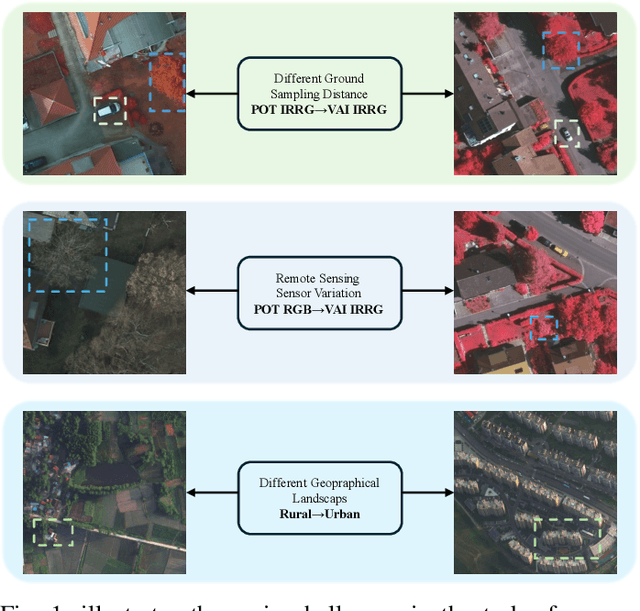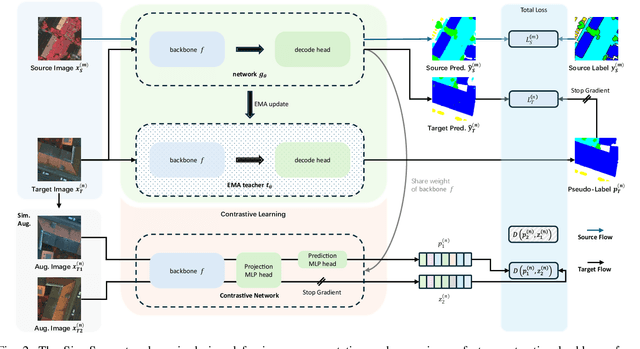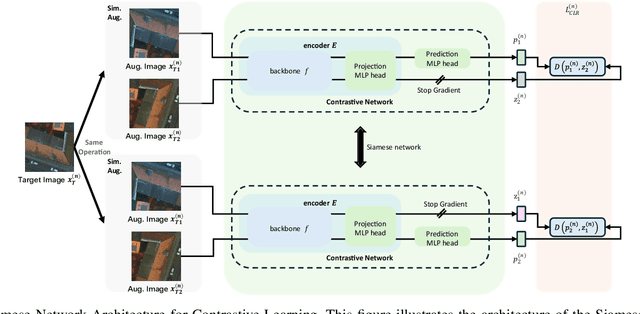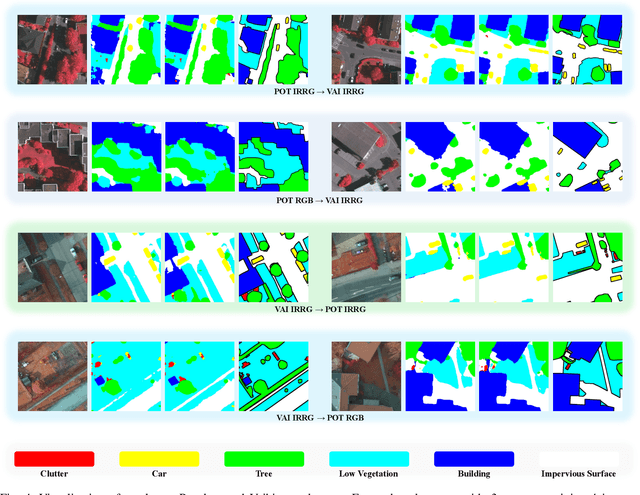SiamSeg: Self-Training with Contrastive Learning for Unsupervised Domain Adaptation in Remote Sensing
Paper and Code
Oct 17, 2024



Semantic segmentation of remote sensing (RS) images is a challenging task with significant potential across various applications. Deep learning, especially supervised learning with large-scale labeled datasets, has greatly advanced this field. However, acquiring high-quality labeled data is expensive and time-consuming. Moreover, variations in ground sampling distance (GSD), imaging equipment, and geographic diversity contribute to domain shifts between datasets, which pose significant challenges to models trained solely on source domain data, leading to poor cross-domain performance. Domain shift is well-known for undermining a model's generalization ability in the target domain. To address this, unsupervised domain adaptation (UDA) has emerged as a promising solution, enabling models to learn from unlabeled target domain data while training on labeled source domain data. Recent advancements, particularly in self-supervised learning via pseudo-label generation, have shown potential in mitigating domain discrepancies. Strategies combining source and target domain images with their true and pseudo labels for self-supervised training have been effective in addressing domain bias. Despite progress in computer vision, the application of pseudo-labeling methods to RS image segmentation remains underexplored.
 Add to Chrome
Add to Chrome Add to Firefox
Add to Firefox Add to Edge
Add to Edge